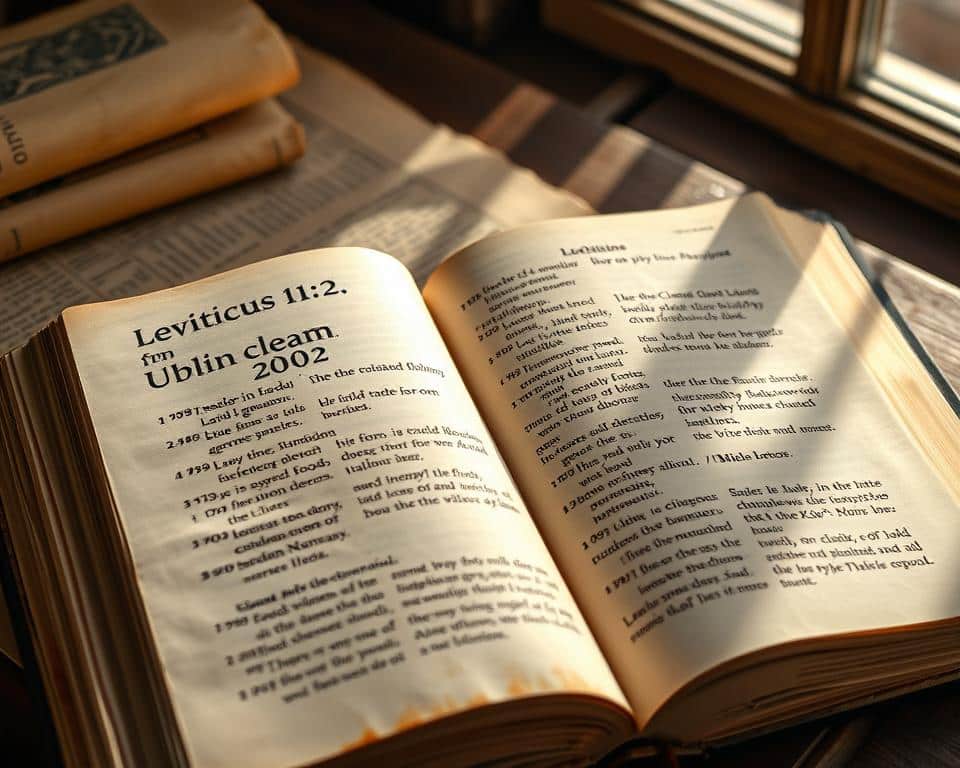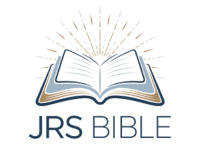“To be a Christian means to forgive the inexcusable because God has forgiven the inexcusable in you.” — C.S. Lewis. This quote calls us to clear thinking and humble study as we ask a key question about sacred law.
I write to explain what Scripture says about clean and unclean foods in Scripture and why this matters for faith today. The aim is simple: state the scope, offer careful reading, and seek a clear answer.
The guide covers the dietary laws of the Torah, key New Testament passages, and common questions people ask. I define core terms so we use one meaning for each word through the guide.
Leviticus 11 sets categories and ends with a call to distinguish what may be eaten and what may not. We will show where that call appears and how it applies.
I will treat this topic with respect for differing views. My goal is to help readers apply truth with care so faith and practice reflect God’s word.
Key Takeaways
- We will explain dietary laws and their scope.
- The main question seeks God’s intended answer for believers.
- Core terms get clear, single meanings for the guide.
- Leviticus 11 highlights the duty to distinguish every living thing that serves as food.
- We approach the topic with humility and respect for people who read the law differently.
Purpose, audience, and scope of this ultimate guide
I want to make plain how biblical law classifies certain animals and why that matters for faith.

I write this guide to help readers learn how the Bible marks clean unclean categories. The aim is clear: define terms, trace chapter texts, and show practical use.
Search intent: understand meaning and relevance of biblical dietary laws
The main audience includes Adventists, other Christians, and people who seek a careful, Bible-first walk through these lists. Readers will gain a plain answer to the question of what may be eaten and why.
Scope: I survey Torah passages, key Gospel and Acts chapter texts, and letters that address food and practice. I use direct Bible texts and concise, reputable study helps as sources.
- Method: read context, compare texts, keep law and grace together.
- Tone: warm, respectful, anchored in God’s word.
- Practical aim: link texts to daily choices about food and fellowship.
| Focus | What readers get | Sources |
|---|---|---|
| Chapter-level study | Clear rules and plain answers | Torah, Gospels, Acts, Epistles |
| Covenant context | How certain animals fit covenant life | Bible texts, study helps |
| Practical use | Daily choices and fellowship guidance | Examples tied to Scripture |
Clean and unclean in Leviticus 11 and Deuteronomy 14
I examine Leviticus 11 and Deuteronomy 14 to make plain how God set dietary signs for the community. The laws give clear, paired signs for land animals and sea life.

Land animals: divided hoof and chew cud (Leviticus 11:2-8)
Leviticus 11:2 sets the rule that a land animal may eat only if it has a divided hoof and will chew cud. Both marks must be present. A split hoof without cud fails the test. An animal that chews cud but lacks a split hoof also fails.
The text names the camel, hyrax, rabbit, and pig as unclean animals. Israel must not eat their meat or touch their carcasses.
Sea life: fins and scales only (Leviticus 11:9-12)
The rule for fish is simple: only those with both fins and scales may be eaten. All that lack either fins or scales are listed as unclean.
Birds listed as unclean, including the little owl (Leviticus 11:13-19)
The chapter gives a detailed list of birds the people must avoid. It names raptors, scavengers, and several owls, including the little owl (see leviticus 11:19). The list shows how specific the law can be.
Insects: locust, katydid, cricket, grasshopper permitted (Leviticus 11:20-23)
Most flying creatures are barred. One exception exists for certain hopping insects with jointed legs. Locust, katydid, cricket, and grasshopper may be eaten.
Contact rules: carcasses, vessels, and evening uncleanness (Leviticus 11:24-40)
Touching a carcass makes a person unclean until evening. Clothes must be washed. Some contaminated vessels must be broken. Springs and cisterns remain clean unless polluted by a wet seed or a falling carcass.
“You must distinguish between the clean and the unclean.” — Leviticus 11:47
- Practical point: The chapter forms a clear rule set so the people know what they may eat and what to avoid.
Clean and unclean foods in Scripture
I will define the key terms the law uses so the lists guide real choices.
Key terms made plain
Clean means fit for contact and fit for the altar or table within covenant life.
Unclean means unfit for contact or eating under the law. Some cases are temporary by category.
Words for animals, creature, and thing
The text uses animals for land mammals, names birds, and speaks of sea life as separate groups.
Creature and creatures cover movers of land, air, and water. The law treats each group with clear marks.
Food, meat, and the call to distinguish
Food is what God permits Israel to eat. Meat is animal flesh set for eating.
“You must distinguish between the unclean and the clean, between living creatures that may be eaten and those that may not.” — Leviticus 11:46-47
The lord god gives this command so every living thing and every creature meets an ordered rule. The verbs may eaten and may not be eaten guide home practice, teaching, and leadership judgment.
| Term | Simple definition | Use |
|---|---|---|
| Clean | Fit for altar or table | Permits contact and eating |
| Unclean | Not fit to touch or eat | Requires separation or time-bound rule |
| Animals / Creatures | Land, sea, air movers | Grouped by signs (hooves, fins, scales) |
| Food / Meat | What God allows to eat | Practical household decisions |
New Testament passages about food and uncleanness
In the New Testament several passages move the debate from ritual law to the condition of the heart. I summarize each passage plainly and note common readings so a reader can weigh the texts for faith and practice.
Mark 7: defilement comes from the heart (Mark 7:19-23)
Mark records that jesus said what enters a man does not make him made unclean. He points to evil thoughts, words, and deeds that flow out of the heart as the real source of defilement.
Many read Mark as a broad statement that all foods are declared clean. Others see it as a critique of hand-washing traditions that miss moral intent.
Acts chapter 10: Peter’s vision and the command
Acts chapter 10 narrates a vision in which a sheet with many animals appears and a voice tells st. peter to said eat.
Peter resists, citing his practice. The voice answers, “Do not call anything impure that God has made clean.” Peter links the scene to Gentile inclusion, and readers differ on whether the rule about foods also changes.
1 Timothy 4:1-5: warning about abstaining from meats
Paul warns against those who command abstinence from certain meats. He writes that every creation of God is good when received with thanks and prayer.
This text confronts added rules and urges careful use of freedom under the gospel. I keep the law and the gospel together and encourage careful reading so a man may live by truth.
How Christians interpret these dietary laws today
Different Christian readers reach different answers about how ancient dietary rules apply to modern faith. I outline three main perspectives so a person can weigh the texts and the practical outcomes. This short guide keeps the focus on Scripture, charity, and study.
1. The law was a teacher fulfilled in Christ
Many read the Torah as a tutor that pointed to Christ. Once Christ came, they say, the law’s role changed. This view holds that dietary laws no longer bind the church, and that believers live by faith and gratitude.
2. Acts 10 as inclusion and food change
Some conclude that Peter’s vision and the command point to both Gentile inclusion and a change about permitted items. They cite how st. peter was shown that what God has made may be received. For these readers the sheet scene affects table practice as well as mission to the people.
3. Debate: people, hand-washing, and what defiles a man
Other interpreters argue Acts 10 addresses persons rather than menus. They read Mark and Matthew as critiques of ritual hand-washing and note that when jesus said what comes out of a man defiles, the point centers on heart and speech. This view keeps some historic distinctions while stressing moral purity.
Respect and charity should guide our tables: we must not judge another over food, but help one another grow in truth.
I urge prayer, calm study, and patient conversation so people may hold convictions with grace while seeking a clear answer from God’s word. Unity rests in Christ; our conduct should aim at love, holiness, and peace under the law of Christ.
Practical examples and common questions readers raise
This section gives plain examples so a person can decide what to eat with confidence.
What meats you may eat
I list clear cases for quick decisions. Beef and lamb may eat because these animals chew cud and have a divided hoof. Say “may eat” at the butcher for cattle or sheep cuts.
For fish, salmon and trout may eat. They have both fins and scales, so they meet the rule for sea life.
What is made unclean
Pork and camels are examples of unclean animals; pork is not permitted under the law given to Israel.
- Shellfish, catfish, and eels lack fins and scales. Avoid those foods.
- Certain birds are forbidden. The list names an owl as one kind you must not eat.
- Creeping creatures and carrion carry risk. Touching a carcass makes a man unclean until evening.
Question about mixed dishes? Check each kind of source. For labels, verify species and watch for gelatin or lard from forbidden animals. At events, ask ahead and state your need politely.
Simple kitchen steps: keep tools separate, rinse surfaces, and verify each ingredient before cooking clean kinds of meats and fish.
Bible study tips for this topic
Start with the chapter itself. Read Leviticus 11 straight through and mark each rule for land, water, air, and ground creatures. Note how the chapter concludes with the call to distinguish.
Read Leviticus 11 with Acts 10 and Mark 7 in parallel
Next, read Acts 10 and track the vision, the commands, and Peter’s explanation at Cornelius’ house. Then read Mark 7 and tag the parts about hand-washing and what defiles a person.
- Mark specific birds at leviticus 11:19; note the little owl and compare translations.
- Make a side-by-side list that places law texts next to New Testament texts to see links and differences.
- Use a concordance to trace words like meats, animals, and creatures across books.
- Check study notes carefully and test claims by reading verses in context.
- Read with a small group so other people can raise questions and sharpen your view.
Pray for light and ask God to grow your faith as you study. Steady work over time builds confidence and hope.
Key takeaways for faith and daily life
Here I offer concise takeaways that link Leviticus 11’s signs to daily choice and church life. The Torah marks land animals by hoof and cud; sea life by fins and scales. These signs teach holy distinction and guide what may eaten at table. Acts 10 and Mark 7 shape how many read those rules for the church age, so study the texts with care.
I urge faith that obeys God’s word with a clear conscience and a thankful heart. Show love and patience toward others when you choose meats or meatless meals. Seek prayer, counsel, Scripture study, and then hold your practice with kindness. The lord god calls for truth in the heart and holiness in habits; let hope shape how you serve people and creature alike.





